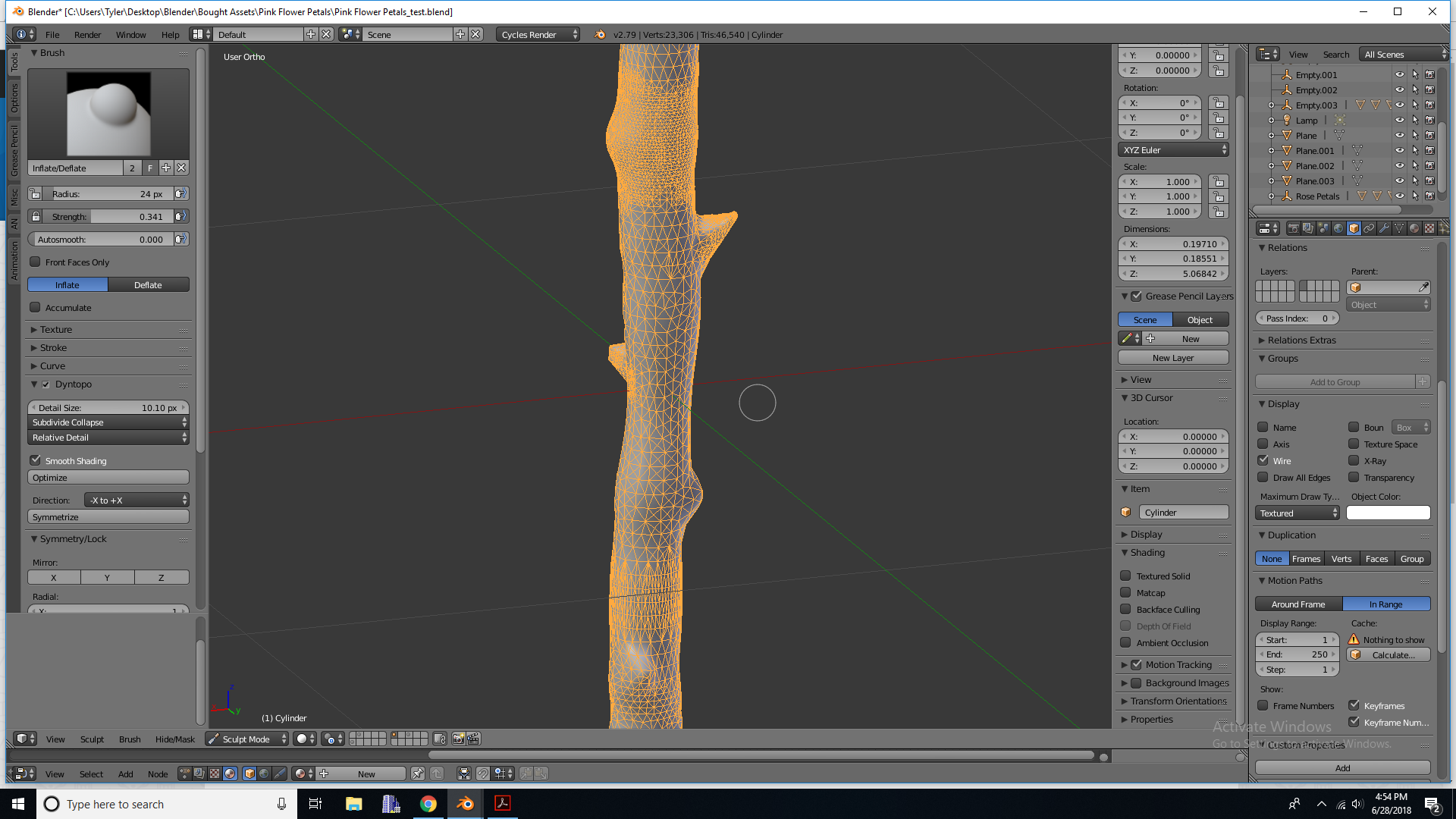I'm trying to retopologize a flower stem that I sculpted. I am applying a shrinkwrap modifier to a circle where I close follow the geometry and then as I understand it, the shrinkwrap modifier should conform to the original mesh. It seems to be conforming decently but it is super blocky and isn't smooth. I thought it might have to do with the fact that the sculpting underneath isn't smooth enough. What're your guys thoughts? I'd be curious to understand what is going on "under the hood" with the modifier and triangles (and their normals) from a mesh sculpt. Here are the images, the first one shows the blockiness of the wrap and the 2nd one shows my sculpt:

-
1$\begingroup$ This is expected. You cannot perfectly represent a high poly model with a low poly one, or else we wouldn't have any high poly models. Your low poly retop will not match your stem exactly. Make sure you have smooth shading and try to represent the edge flow of your model, retopo takes practice as much as anything else. $\endgroup$– NathanCommented Jun 28, 2018 at 23:36
-
$\begingroup$ @Nathan That makes sense. Thanks for the help man! $\endgroup$– Tyler DahlCommented Jun 28, 2018 at 23:38
2 Answers
Change the order of your modifiers. Shrink Wrap first then SubSurf. See which one you like better.
The most efficient solution to problems like this, for me, involves both the subsurface modifier and then, after it, the decimate modifier. The problem comes from the lack of relative equivalence in vertex count for your two models, the shrinkwrapper and the shrinkwrappee.
You can apply a basic Subdivision Surface modifier to the wrapper, typically set to Simple, with a count high enough to remove the seams. (Naturally, make sure you set your wrapping mesh to "Shade Smooth" first.) This has been discussed before, but is very inefficient on its own for storage and crippling if you're building for something like a game...
So, once it is high enough, you're likely to have more vertices than you actually need. You can use a Decimate modifier to drop them to a low percentage of what they were, using the "Collapse" setting. You'll have an edge count visible in the modifier, get it as low as you're comfortable with. Generally speaking, the lower the edge count, the better; but after you hit a certain point you will start noticing artifacts.
Depending on the mesh, I can usually bring it down to around 0.25. Collapse mode removes the least significant edges first for the overall flow of the mesh; so it's reasonably intelligent about what gets to be kept, and what it can ditch, given its parameters. (You will be amazed just how much unnecessary baggage your model can be carrying after a SubSurf.)
The best thing about these modifiers is that the additional vertices are not stored in the model file, to my understanding; they're created at run-time. For a game, you will want to apply the two when you're content with them, if it isn't done automatically. Otherwise, if you have something else deforming it, like a hook or an armature modifier, which works before the subsurf and decimate modifiers, it will continue to work; though you may sometimes have to wait on modifier processing for a second or two.

